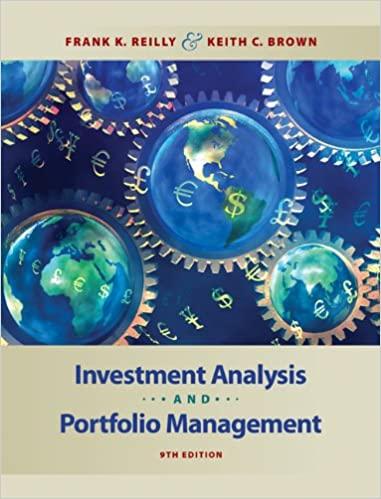Answered step by step
Verified Expert Solution
Question
1 Approved Answer
Fowler, Inc., has no debt outstanding and a total market value of $ 2 0 0 , 0 0 0 . Earnings before interest and
Fowler, Inc., has no debt outstanding and a total market value of $ Earnings before interest and taxes, EBIT, are projected to be $ if economic conditions are normal. If there is strong expansion in the economy, then EBIT will be percent higher. If there is a recession, then EBIT will be percent lower. The firm is considering a debt issue of $ with an interest rate of percent. The proceeds will be used to repurchase shares of stock. There are currently shares outstanding. Ignore taxes for questions a and b Assume the stock price is constant under all scenarios.
a Calculate return on equity ROE under each of the three economic scenarios before any debt is issued. Do not round intermediate calculations and enter your answers as a percent rounded to decimal places, eg
a Calculate the percentage changes in ROE when the economy expands or enters a recession. A negative answer should be indicated by a minus sign. Do not round intermediate calculations and enter your answers as a percent rounded to decimal places, eg
b Assume the firm goes through with the proposed recapitalization. Calculate the return on equity ROE under each of the three economic scenarios. Do not round intermediate calculations and enter your answers as a percent rounded to decimal places, eg
b Assume the firm goes through with the proposed recapitalization. Calculate the percentage changes in ROE when the economy expands or enters a recession. A negative answer should be indicated by a minus sign. Do not round intermediate calculations and enter your answers as a percent rounded to decimal places, eg
Assume the firm has a tax rate of percent.
c Calculate return on equity ROE under each of the three economic scenarios before any debt is issued. Do not round intermediate calculations and enter your answers as a percent rounded to decimal places, eg
c Calculate the percentage changes in ROE when the economy expands or enters a recession. A negative answer should be indicated by a minus sign. Do not round intermediate calculations and enter your answers as a percent rounded to the nearest whole number, eg
d Assume the firm goes through with the proposed recapitalization. Calculate the return on equity ROE under each of the three economic scenarios. Do not round intermediate calculations. Enter your answers as a percent rounded to decimal places, eg
d Assume the firm goes through with the proposed recapitalization. Calculate the percentage changes in ROE when the economy expands or enters a recession. A negative answer should be indicated by a minus sign. Do not round intermediate calculations and enter your answers as a percent rounded to decimal places, eg
Step by Step Solution
There are 3 Steps involved in it
Step: 1

Get Instant Access to Expert-Tailored Solutions
See step-by-step solutions with expert insights and AI powered tools for academic success
Step: 2

Step: 3

Ace Your Homework with AI
Get the answers you need in no time with our AI-driven, step-by-step assistance
Get Started


